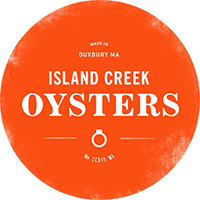In the early Spring of this year, our team flew to Miami, Oklahoma (yes, you read that right!) to learn more about the newest product to excite our tastebuds: Paddlefish Roe. Comparable to the complex, earthy and salty flavors of Sterling and Marshallberg Caviar, Paddlefish Roe is a more approachable product for those just beginning to dive into the world of caviar.
It was here in this quiet town that we visited the Fisheries Research Program Center where the fish are studied, the eggs are harvested, and the roe is cured by a team of professionals. The program is set up to help to conserve the state of Oklahoma’s wildlife, including fishery resources. Their mission is to manage Oklahoma’s habitat to provide scientific, educational, aesthetic, economic and recreational benefits for present and future generations of hunters, anglers and others who appreciate wildlife.
The process of this system allows people to volunteer their catch to the Research Center to offer up the data that the fish provides (age, sex, egg production, fat content, size, etc). In return, the center processes the fish, and filets it to be picked up by the owner to enjoy at home! We were ready to learn every step of the process.
BUT FIRST – as the locals do – we had to try our hand at snagging this majestic fish for ourselves! Think we caught one? Just take a look at the evidence…
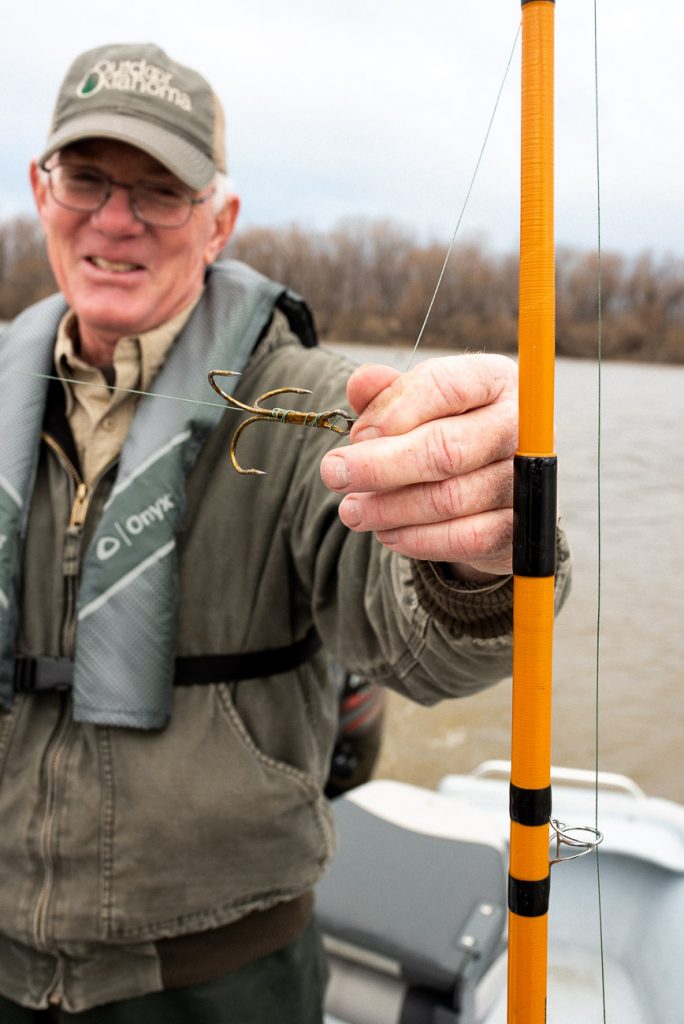
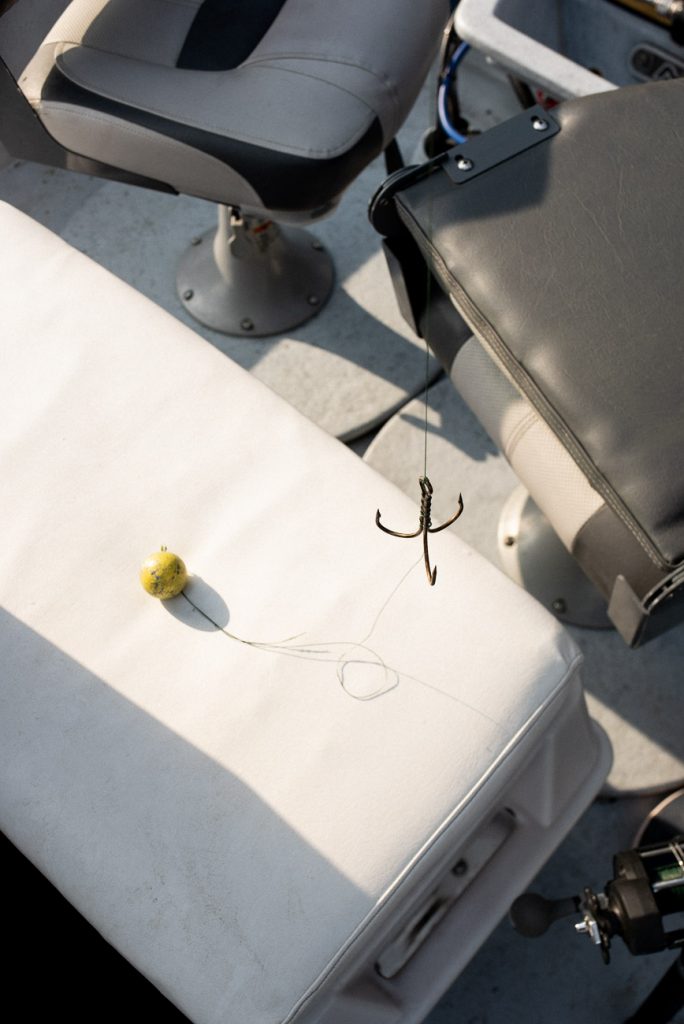
We ventured out with Bill Newman from the retired fisheries division on a mission to snag our own Paddlefish!
March is the prime fishing season for Paddlefish, as this spoonbill fish migrates up the Neosho River to spawn. The thrill of “snagging” a Paddlefish draws in recreational fishermen from around the country.
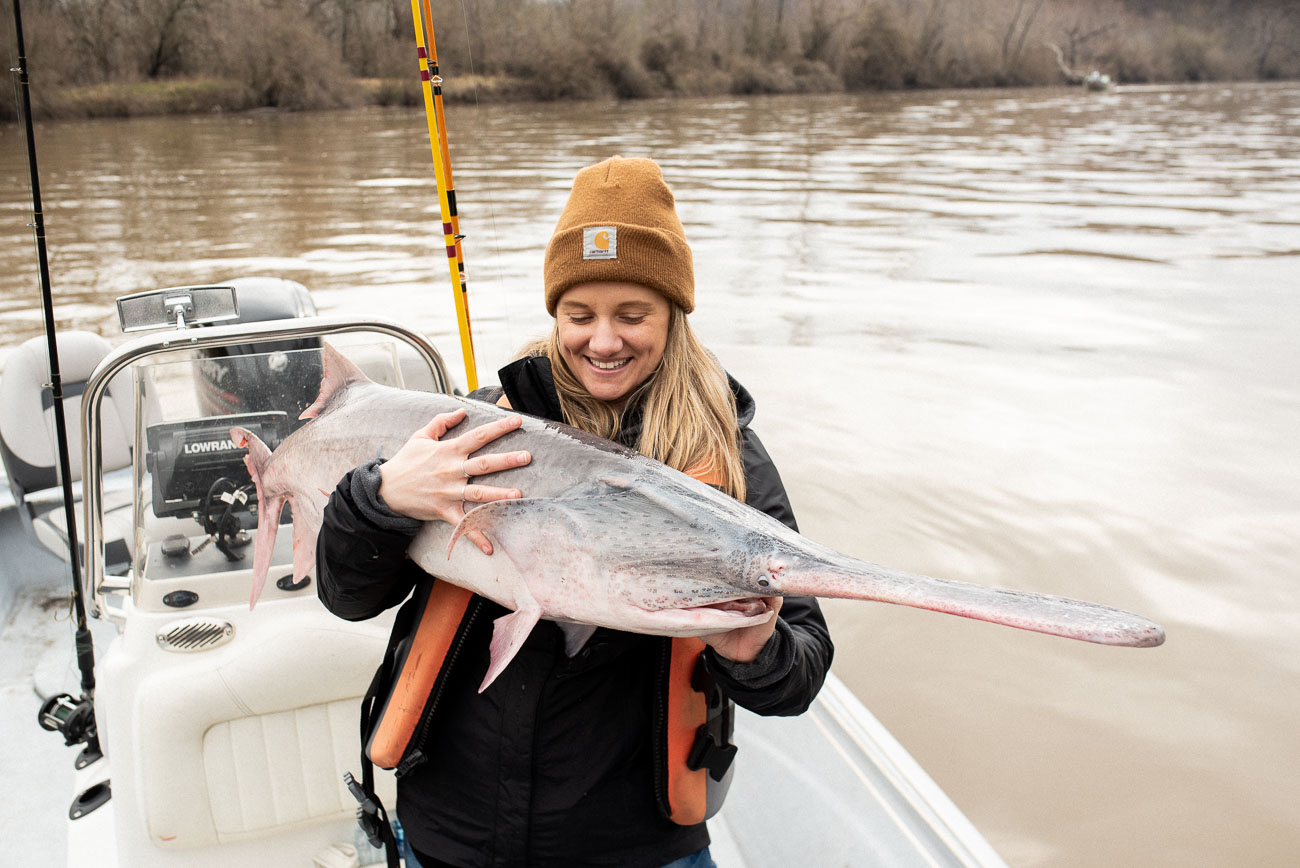
To conserve the population of Paddlefish, the state has regulated the number of fish you can keep a year – just 2 per person (1 catch per day). Meggie caught herself a keeper!

After bringing the fish back to the center, Meggie speaks with Brandon Brown, supervisor of the Fisheries Research Program in Miami, Oklahoma where the Paddlefish Roe is harvested, cleaned and cured.
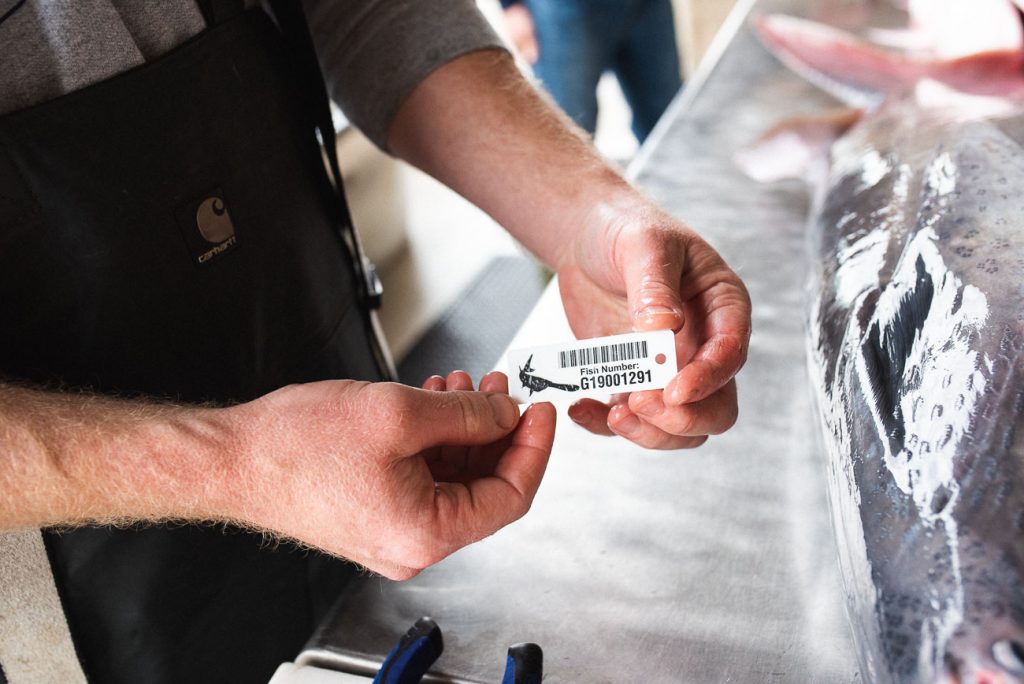
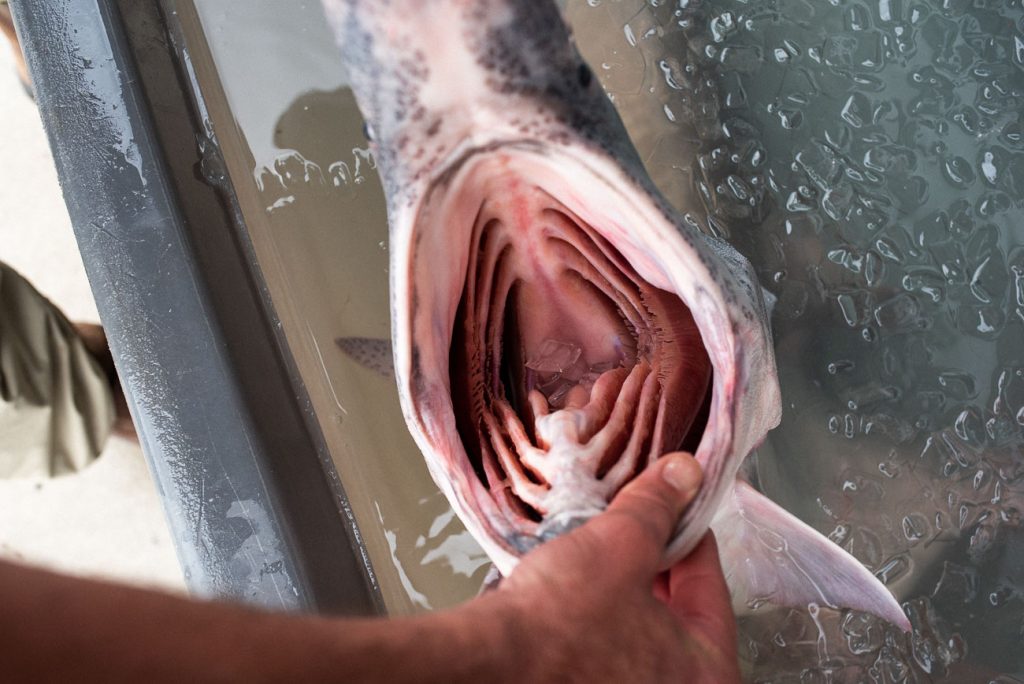
Paddlefish biologists, Jason Schooley and Adam Geik, are among the team who receives the Paddlefish brought in by local fishermen to gather data metrics before the eggs are harvested and the fish is processed. They are all about full transparency. They tag the fish, and every part that comes from it, so that you can always trace it back to who caught it and what fish it belonged to.
At the end of the day, the roe that comes from this conservancy is a by-product of the research. No fish is harvested solely for their roe.


Back at the research center, a lovely woman named Amber processes the eggs. She comes from a family with a long history of processing caviar. She remembers salting caviar on her kitchen counter when she was seven years old, and can already see the desire to learn in her own seven-year-old daughter. Just across the hall from the processing room, her husband works filleting the fish. The small team that runs this center reflects the kind of tight-knit community you find in this small town and one that reminds us of our own community of oyster farmers back in Duxbury.
We now offer Paddlefish Roe in our online store to order and try and home. Shop for it here.


